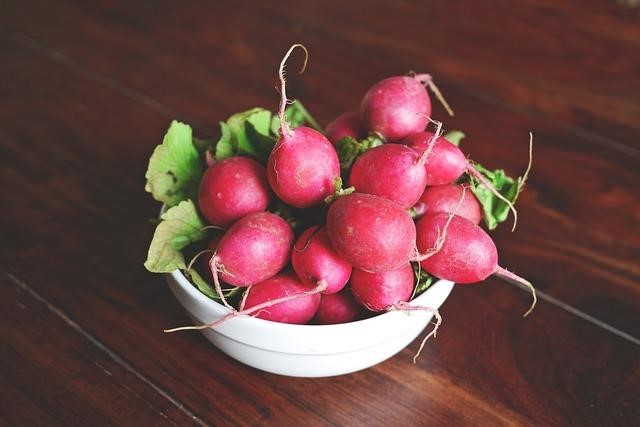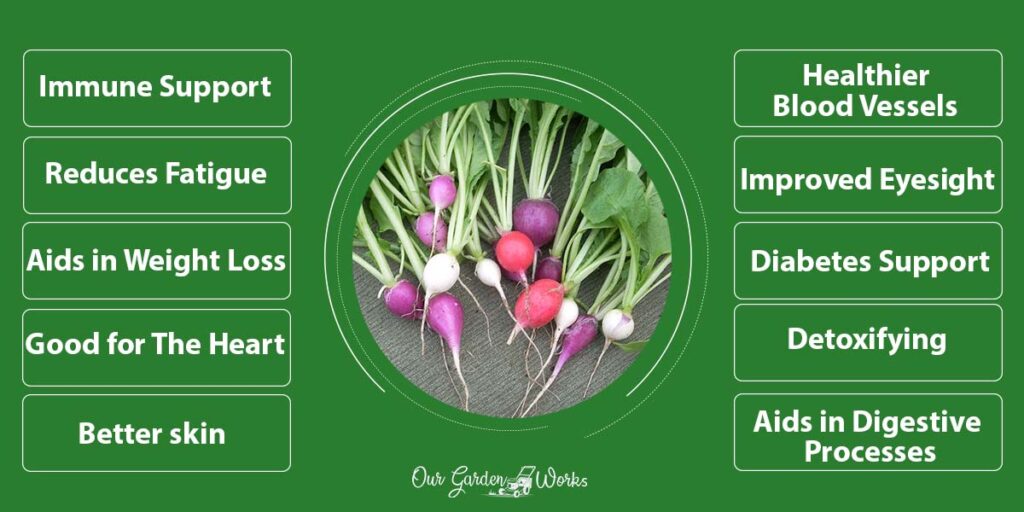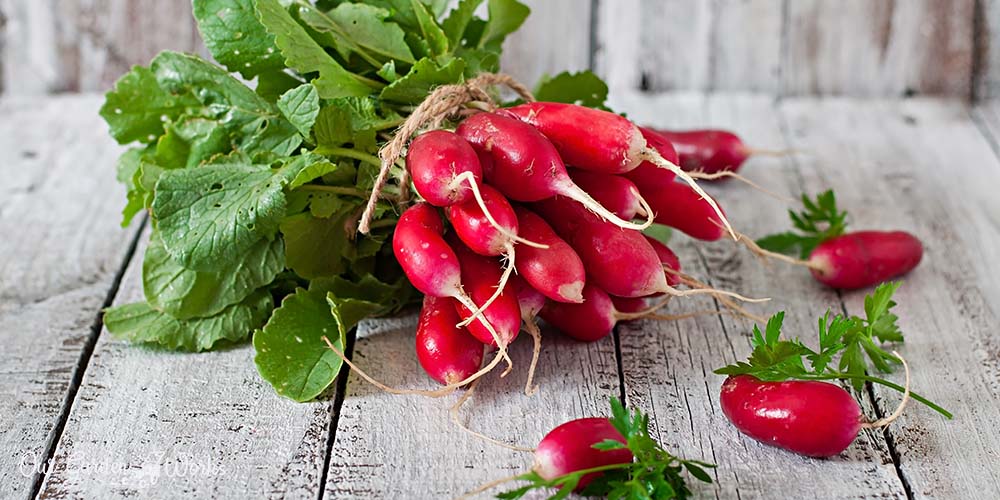Are you also throwing away Radish leaves whenever you cook?
Well, it turns out that they are valuable and you might want to think twice before you chop them off. The potential of Radish leaves is still unknown to most cultures. The use of it is also uncommon in most cuisines either.
Poisonous or not, it can be hard to get rid of these radish greens, especially when vegetables cost more than unhealthy foods.
How great would it be to discover more edible parts from the vegetables that we always cook, right? Not only are we able to get more from the veggies that we eat but also reap the health benefits they possess.
In this post, let’s find out if radish leaves are poisonous or if we can safely add them to our diet.
Are Radish Leaves Poisonous?
No, all kinds of Radish leaves are not poisonous and they’re edible.
It is packed with vitamins and minerals that make it a great addition to your diet. You can cook it as a dish, make it a salad or a healthy smoothie.
Radish leaves also have medicinal properties that treat and prevent different diseases. It was used as a medicine in certain regions of SouthEast Asia that was later introduced in some parts of Europe and America.
Some sources say that the Radish leaves are also mentioned in historical texts and used by our ancestors as part of their diet.
We humans always fear what is unknown to us. So it’s easy to assume that Radish leaves are poisonous in some cultures.
In reality, they are crunchy and taste like cabbage or swiss chard. Older Radish leaves may have a peculiar taste to some that can be removed by cooking them.
Young Radish leaves, on the other hand, have a peppery taste which makes it a great ingredient for dips or mixed with mayonnaise.
In ayurvedic medicine in India, Radish leaves are used for many centuries for their special benefits to the body.
According to the Ayurvedic nutritionist Sahara Rose Ketabi, “Most greens are cooling for the digestion, but Radish’s pungency enhances [the fiery energy known as] pitta in the digestion, while still cooling the blood “.
Benefits of Radish Leaves To Our Health

1. Health Benefits of Radish Greens
All types of Radish leaves are packed with vitamins and minerals that are good for our body.
These underrated greens are good sources of our daily nutritional needs for better health. It contains:
- Vitamin C: helps generate and repair cells in our body and strengthens the immune system.
- Vitamin A: promotes good eyesight, healthy teeth, mucus membranes, and skin.
- Calcium: supports bone and muscle strength
- Iron: boosts blood circulation and the formation of proteins and enzymes.
- Carotenoids: are antioxidants found in plants that help your body fight diseases
- Fiber: lowers cholesterol and sugar levels and promotes good bowel movement
- Vitamin B6: aids in hemoglobin production and helps prevent and treat anemia.
- Magnesium: a mineral that plays an essential role in muscle and nerve function, blood pressure regulation, and immune system support.
- Potassium: helps lower blood pressure and water retention and prevent osteoporosis and the formation of kidney stones.
The combination of these nutrients not only makes Radish greens a good addition to your diet but also a good staple food for better well-being.
Who would’ve thought that the greens we’ve been disposing of are full of nutrients we need every day. What’s more, it has a lot of contribution to our holistic wellness.
2. Health Benefits of Radish Leaves

Here are the good treats of Radish leaves to our body when we incorporate them into our diet:
Immune Support
The Vitamin and Vitamin C content of Radish leaves helps the white blood cells in the body and strengthens the body’s immune response.
With an improved immune system, you have less susceptible to a lot of diseases such as diabetes, heart and lung diseases.
Reduces Fatigue
Radish leaves contain high levels of iron, phosphorus, and thiamine that helps prevent fatigue. A Cup of radish green is enough to sustain your daily needs of essential vitamins and keep you energized for the whole day.
Aids in Weight Loss
A cup of Radish greens contains 10 to 13 calories. These crunchy greens are filling due to their high fiber content.
If you’re looking for a new flavor added to your weight loss diet, Radish leaves is a way to go.
Good for The Heart
Radish contains a flavonoid called anthocyanin that is accumulated in every part of the plant like its leaves, stem, and root.
Studies have shown that anthocyanin can lower your risk of cardiovascular diseases due to its beneficial effect on blood vessels, platelets, and lipoproteins.
Anthocyanin also gets rid of the free radicals in our body caused by stress and other external factors like pollution. These free radicals are the culprit of numerous illnesses if it accumulates in the blood and damages healthy cells.
Better skin
Another impact of high Vitamin C content is its good effect on our skin. The phosphorus, zinc, and Vitamin C found in radish leaves are not only an ally of our immune system but also a powerhouse for a good skincare regimen.
Frequent consumption of Radish leaf or its juice can prevent skin dryness, blemishes, and acne.
Healthier Blood Vessels
Radish leaves also aid in collagen synthesis which boosts the elasticity of the blood vessels.
Thus, resulting in better cardiovascular health. The collagen synthesis is activated by the Vitamin C and other minerals packed in radish greens.
Improved Eyesight
Vitamin A is another main component of Radish leaves that boosts rhodopsin which is an eye protein that helps you see clearly at night.
It also plays a crucial role in keeping your cornea clear, resulting in clearer vision.
Good for Diabetes Support and Prevention
Radish leaves can reduce the intestinal glucose absorption of our body. Frequent consumption of these greens can help diabetics control their blood sugar levels and make their condition more manageable.
On the other hand, healthy individuals who consume Radish leaves in their diet also lowers their risk to develop diabetes and other diseases.
Detoxifying
Aside from vitamins and minerals, Radish leaves also contain antibacterial and antimicrobial properties that help keep the toxins away from your body.
Adding it to your daily breakfast smoothie or your meals has a great impact not only on preventing diseases but also on preventing them altogether.
Aids in Digestive Processes
Most greens like Radish leaves have high fiber content that aids in proper bowel movement.
Fiber absorbs water as it enters our digestive tract and bulks up to make the bowel move smoothly around our digestive tract. Therefore, preventing constipation.
3. Radish Leaves as Medicine
With all the benefits to our body, isn’t it such a waste to throw away Radish leaves?
Well, that’s not all of its benefits. Radish leaves can also help treat several diseases. These include:
- Yeast infections: Radish leaves contain the antifungal protein RsAFP2 that fights the candida which causes oral and vaginal yeast infections. Boiling Radish leaves and steaming the infected part of the yeast infection can help kill the fungus and treat the infection.
- Scurvy: A weekly consumption of Radish leaves can help prevent scurvy. Scurvy is the deficiency of Vitamin C that is often shown in symptoms such as fatigue and sore muscles in the arms and legs.
- Hemorrhoids or Piles: Radish leaves and juice is one of the best cures for inflamed hemorrhoids. Consume a Radish leaf smoothie twice a day for treating this condition.
- Jaundice: Crushed Radish leaves or juice can help reverse the yellowing of the skin or Hyperbilirubinemia in patients with jaundice.
- Rheumatoid Arthritis: The pains of rheumatism can be relieved by applying the radish leaf paste to the inflamed joints in your body. Radish leaves have anti-inflammatory properties that help control swelling.
How to Add Radish Leaves To Your Diet?
Now that the value of Radish leaves are revealed, here’s how you can incorporate them into your diet:
1. Young Radish Greens: Can be fermented or added to your usual salad and mixed mayo or balsamic vinegar. Here are some recipes that you can try:
2. Mature Radish Greens: Can be made as a dip, vegetable patties, or an addition to soups. Remove the hard stalks and stem since they are hard to chew. Here are some cooking ideas:
3. Wilted Radish Leaves: Use for daily smoothie/juice or dried for fermentations and tea
You might like: The Noob Friendly Guide To Blanch Celery: 5+ Ways [and Means]
Frequently Asked Questions About Radish
Can you eat radish leaves raw?
Radish leaves can be eaten raw. However, old leaves can be too tough to chew so prefer young leaves when making a salad. Radish leaves have a crunchy peppery taste when eaten raw and classified under the same plant family as cabbage and swiss chards.
Are Radishes better cooked or raw?
Radish leaves are both delicious when eaten raw or cooked. Its taste will be based on your preferences for radish greens.
When should I drink Radish juice?
Radish juice is strong and should with a full stomach be consumed. You can drink it after meals. You may also mix it with other fruit and vegetable juices to make it more tolerable.
Do Radish leaves make you sleepy?
Though radishes can also help fight the cough and colds brought by winter. It doesn’t have the same drowsy effect as other synthetic decongestants. However, in general, green leafy vegetables have a calming effect on our body that can be misinterpreted as sleepiness.
Is Radish smoothie good for acidity?
Contrary to its taste, radish and its leaves are beneficial for individuals with acid reflux and hyperacidity. It has been used in many cultures to relieve stomachache, heartburn, and gas. However, every individual has a unique response to some foods so better err on the side of caution and consult your physician first.
Are Radish leaves good for weight loss?
Radish greens are a good source of fiber that can help you feel full without consuming too many calories. It is also low on the glycemic index and can reduce the sugar absorption of our digestive system. Aside from its, weight loss features, it destroys the free radicals caused by oxidative stress and prevents the production of stress hormones. Stress hormones are one of the culprits why our body mistakenly stores fat for survival.
Can I juice Radish greens?
Absolutely! Radish greens can add flavor to your usual smoothies and juices. It’s also quite versatile and can be mixed with other healthy fruits and vegetables. When taken daily, radish greens juice and smoothie can keep you away from various illnesses and make your skin look younger.
Final Thoughts
With all the health benefits of Radish leaves to us, we’re sure that you’ll no longer think twice about keeping them.
Adding Radish greens opens up your palette to a new flavor that you can get addicted to. Who knows Radish leaves will be your next favorite addition to your dish or smoothie!
We hope that this article has contributed to reducing food waste especially with the greens with a lot of health benefits.
If you liked this post, comment below about your first radish leaf dish and how it improved your health. Enjoy your greens!


